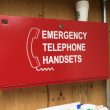The Mother of Natural Disasters
“There are disasters, and then there are catastrophes,” said Ben D. Holycross, radio systems manager with Polk County, Fla. “Hurricane Katrina was a catastrophe. There was just no way to prepare for it.”
Holycross was part of a team, known as the Polk County Emergency Management Communications Program, which was dispatched from Florida to establish communications in one of the hardest-hit areas of Mississippi, Hancock County. Every communications link, including public safety, had been wiped out. The two satellite phones Holycross and his team brought from Florida were the only initial means of communications.
In a normal hurricane, like those typically experienced in Florida, areas are hit with a significant amount of wind and localized flooding; in such circumstances, using microwave links to connect tower sites is a useful strategy. In Katrina’s case, however, radio tower sites sat under 30 feet of salt water, making the fact that Hancock County’s public-safety system does not use microwave links a moot point.
“People had expectations that they were going to get wind, but they never envisioned homes being 30 feet under salt water for 30 hours,” said Holycross. “I don’t know that any of the responders expected that kind of catastrophic event.
“From now on, Hurricane Katrina will be one of the primary examples in any reference to natural disasters.”
The Polk County team used a local Wal-Mart parking lot in Waveland, Miss., as its law-enforcement command center. Harris Corp. donated a 3-meter satellite dish and provided 2 Mb of bandwidth for Internet access. Motorola set up a trunked radio system with 150 radios within 10 days of the disaster while the Polk County team brought in a live 800 MHz Motorola trunked radio system. Together, the systems covered two-thirds of the county.

















